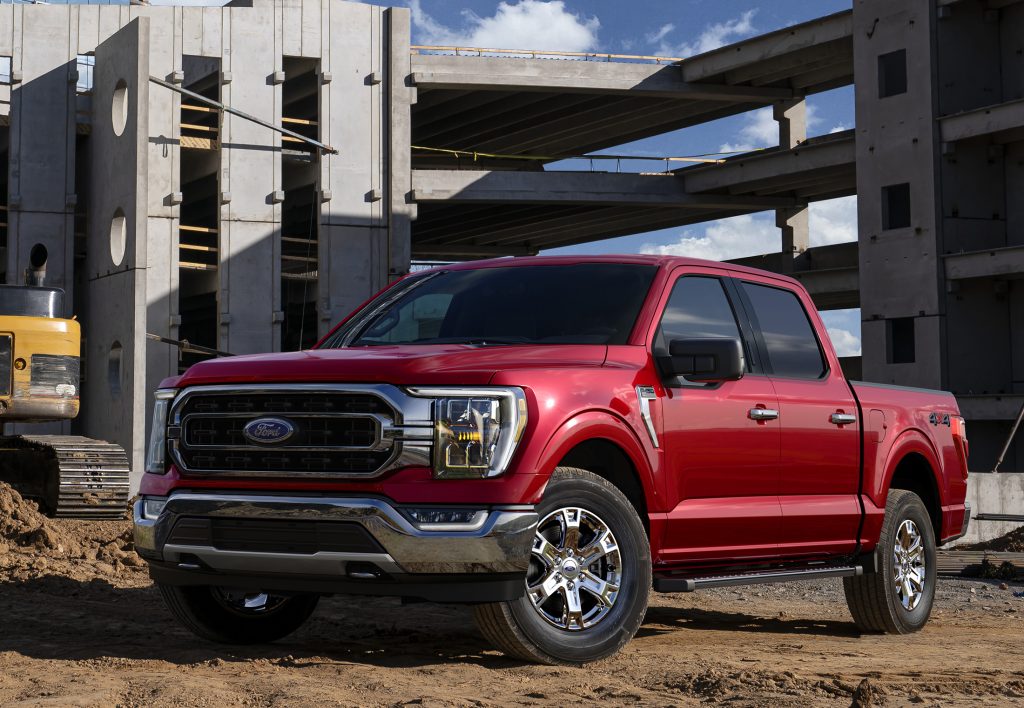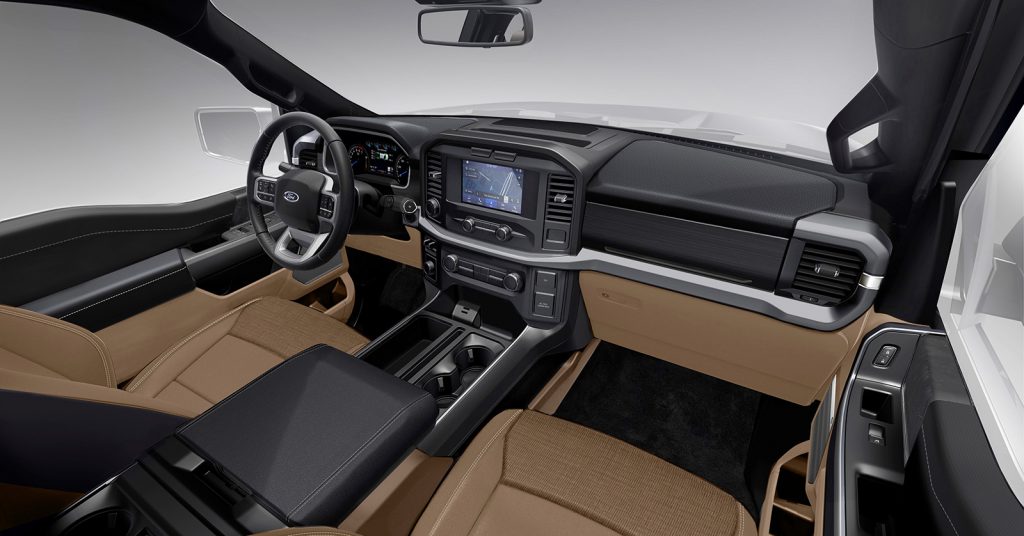Cargazing
By Derek Price
It’s been more than half a decade since Ford’s bold choice to build its most popular product, the F-150 pickup, with extensive use of aluminum alloy.
While the decision didn’t revolutionize the truck world — Ram and General Motors still proudly cling to steel bodies — it did signal that Ford was willing to make big changes to stay on top, and it worked. At the end of 2021, the Ford F-Series remained standing as America’s best-selling vehicle for the 40th straight year.
Last year Ford completely redesigned the F-150 for the first time since the aluminum-bodied 2015 model. While the new truck is more evolutionary than revolutionary, it does offer some new features to keep it competitive against the outstanding new trucks from Ram, GM and Toyota.
The most interesting is Pro Power Onboard, an integrated power generator that can run tools on a worksite or keep home appliances running during a power outage. It has options for 2.0, 2.4 or 7.2 kilowatts of output depending on which engine configuration you pick.

While it has a similar look overall, every body panel on the Ford F-150 was redesigned for the 2021 model year.
My tester, an XLT 4×4, came with the cheapest 2.0-kW option for $995. Ford says it can run tools for a landscaping crew or toys at a football tailgating party. The most powerful 7.2-kW version can run bigger tools such as plasma cutters, TIG welders and air compressors.
The F-150’s cabin is redesigned for work and comfort, too. A large fold-out work surface can help people who use their truck as a mobile office for writing, using a laptop or enjoying a meal. The gear shifter can fold flat to create 15 inches of work space on a small table.
Fold-flat seats on high-end trims make the F-150 more comfortable for sleeping, whether it’s a passenger taking a nap or for camping overnight in your truck.
The heart of the F-150, though, remains the same.
Just like before, this truck can be configured in a virtually limitless number of ways. You can pick from six engines, three cab layouts, three bed lengths, six trim levels and two- or four-wheel drive. That’s before you even get to the option list, which is mind-blowingly long.
The six engine choices include a naturally aspirated V6, two different turbocharged V6s, a diesel V6, a 5.0-liter V8 and a gas-electric hybrid.

The F-150’s redesigned cabin includes an optional shifter that folds down to leave room for a flat work surface.
Only two of the versions — the hybrid and the diesel — get what I’d call good gas mileage. The hybrid is rated for 25 mpg in the city and 26 on the highway with two-wheel drive. The diesel 4×4 is rated at an even better 27 mpg on the highway.
My V8-powered tester was rated for a less impressive 16 mpg in city driving and 22 on the highway, the sacrifice you make for its monster power output: 400 horsepower and 410 pound-feet of torque.
While the ride still isn’t as smooth and luxury-car silent as the Ram 1500, Ford’s 10-speed transmission is the best in the business. It shifts with authority and almost always selects the perfect gear, not hunting and changing awkwardly.
Pricing for the new F-150 starts at $29,290 for the basic XL model and tops out at $73,105 for the luxurious Limited grade.
At A Glance
What was tested? 2021 Ford F-150 4×4 SuperCrew ($43,805). Options: Equipment group 302A ($5,730), 5.0-liter V8 engine ($1,995), extended chrome running board ($225), Ford Co-Pilot 360 ($750), power sliding rear window ($350), liner-tray mats ($200), Pro Power Onboard ($995), interior work surface ($165), trailer tow package ($1,090), box link ($80), tailgate step ($430), 35-gallon fuel tank ($445), 360-degree camera package ($765), cloth 40 console 40 ($295), wheel well liner ($180), spray-in bedliner ($595). Price as tested (including $1,695 destination charge): $59,790
Wheelbase: 145.4 in.
Length: 231.7 in.
Width: 95.7 in.
Height: 75.6 in.
Engine: 5.0-liter V8 (400 hp, 410 lbs.-ft.)
Transmission: 10-speed automatic
Fuel economy: 16 city, 22 highway
RATINGS
Style: 7
Performance: 9
Price: 6
Handling: 5
Ride: 7
Comfort: 8
Quality: 7
Overall: 8
Why buy it?
A complete redesign adds to the F-150s appeal, including new features and six powertrain options.
